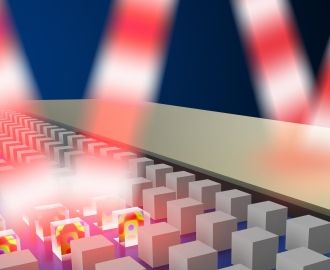 Lithium ion batteries are notorious for overheating because of short circuits – whether they’re in notebooks, in phones or in Boeing 787 Dreamliners.
Lithium ion batteries are notorious for overheating because of short circuits – whether they’re in notebooks, in phones or in Boeing 787 Dreamliners.
 Lithium ion batteries are notorious for overheating because of short circuits – whether they’re in notebooks, in phones or in Boeing 787 Dreamliners.
Lithium ion batteries are notorious for overheating because of short circuits – whether they’re in notebooks, in phones or in Boeing 787 Dreamliners.
 Nanotechnology is one of the great hopes of the electronics industry as Intel’s Moore’s Law reaches its inevitable end.
Nanotechnology is one of the great hopes of the electronics industry as Intel’s Moore’s Law reaches its inevitable end.
 Scientists claim to have invented a mirror that uses nanoscale technology to create new effects.
Scientists claim to have invented a mirror that uses nanoscale technology to create new effects.
According to the Optical Society’s journal Optica, the boffins demonstrated a mirror that abandons a shiny surface but reflects infrared light by using a magnetic property of a non metallic “metamaterial”.
The scientis place nanoscale antennae at the surface of the magnetic mirrors and that allows the capture of electromagnetic radiation that will open up new types of chemical sensors, solar cells, lasers and other devices.
Michael Sinclair, a scientist at Sandia National Labs said: “Our breakthrough comes from using a specially engineered, non metallic surface studded with nanoscale resonators.”
The scientists are developing metamaterials whic are substances engineered with certain properties.
The magnetic mirror uses a two dimensonal array of dioelectric resonators using tellurium. That means the design is more reflective at infrared wavelengths.
 A team of researchers at Penn State University said it has produced ultrathin diamond nanothreads that could just possibly lead to the production of a space elevator between earth and the moon.
A team of researchers at Penn State University said it has produced ultrathin diamond nanothreads that could just possibly lead to the production of a space elevator between earth and the moon.
John V Badding, a professor of chemistry at Penn, said: “One of our wildest dreams for the nanomaterials we are developing is that they could be used to make the super-strong, lightweight cables that would make possible the construction of a “space elevator”, which so far has existed only as a science-fiction idea.”
The discovery shows that the nanothreads include a long strand of carbon atomswhich resemble the fundamental unit of a diamond.
Badding said: “It is as if an incredible jeweller has strung together the smallest possible diamonds into a long miniature necklace. Because this thread is diamond at heart, we expect it will prove to be extraordinarily stuff, extraordinarily strong, and extraordinarily useful.”
The threads are extremely small and only a few atoms across.
Apart from the wild dream of producing an elevator between earth and the moon, more practical applications include materials in vehicles that are lighter, more fuel efficient and so less polluting.
One obstacle is that high pressure needed to produce the diamond nanothreads limit production to only a few cubic millimetres at a time.